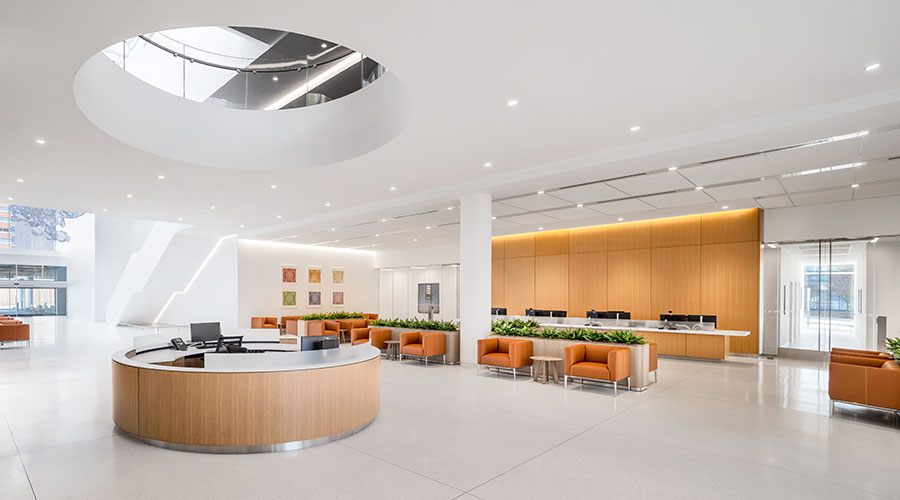Healthcare facilities teams are in a unique position to grow in size and influence as a host of changes impact the way healthcare organizations approach their operations and futures, according to JLL’s Global Future of Work Survey 2024.
To meet these expectations, facilities leaders will have to understand critical trends related to technology and staffing, including AI and sustainability, and they will need to take decisive actions to ensure their departments and activities align with and contribute to the organization’s mission and vision.
Trend: Driving priorities despite constraints
The next five years will present several challenges for healthcare facilities leaders seeking to address the diverse goals and expectations of their organizations. While healthcare corporate real estate decision-makers are eager to be perceived as value drivers, the changing landscape makes it difficult to plan for long-term impact.
For nearly one-half of these executives, a lack of technology investment is the top constraint. Other key constraints include difficulty in identifying the right metrics to demonstrate value and the perception of real estate as a cost center rather than a value driver.
Despite these pressures, most U.S. healthcare business leaders expect the corporate real estate team to deliver the most value primarily by delivering greater community impact and achieving organizational efficiency. Healthcare business leaders also expect facilities teams to deliver the most value by creating new products and services, digitizing operations and services, growing revenue, recruiting and retaining talent and reducing operating costs.
Trend: Outsourcing as solution
In this challenging landscape, partnering with a real estate service provider is viewed as a strategic tool to bring in the expertise and resources unavailable in-house. For 43 percent of healthcare real estate leaders, a blend of in-house and external resources is the most likely model by 2030.
Top areas being considered for outsourcing are renewable energy supply and sourcing, lease administration, workplace strategy, sustainability strategy, portfolio and location strategy and workplace design and fit-out.
Challenges become opportunities
Clearly, U.S. healthcare corporate real estate leaders have a mandate to pursue ambitious goals. Nearly one-half of these leaders expect their function to report to chief executive officers and executive leadership by 2030, creating a new opportunity to show the way real estate can advance the healthcare mission.
To become future-fit for 2030, healthcare real estate teams should consider the following key actions:
- Reengineer the corporate real estate function. Embrace an exploration mindset that can stay agile through a changing business environment. Develop new skills and operating models to futureproof the wider business.
- Become a change catalyst for corporate real estate innovation. Bring smart and create approaches to bear on business challenges, and develop influencing skills to have a voice in key strategic business discussions and decisions. Leverage real estate data to deliver meaningful metrics that will resonate with senior leaders and help strengthen stakeholder relationships.
- Upskill the corporate real estate team. Perform a skills audit on the team, and train and recruit where necessary. Combine internal upskilling with external strategic partnerships to improve performance.
- Streamline corporate real estate operations with technology. Data, analytics and automation tools are becoming must-haves for healthcare facilities to operate efficiently while supporting employees and patient outcomes.
- Embark on the AI journey with a test-and-learn mindset. Map facilities activities that can be carried out by AI and develop strategies for upskilling and managing technology risk.
Driven by new treatments and technologies, evolving business models and revenue trends, the U.S. healthcare industry undoubtedly will see continued transitions over the next five years. Forward-looking facility executives will seize the day to position their function as value drivers who are prepared to support even the most ambitious healthcare missions and visions.
Cheryl Carron is the Americas chief operating officer for JLL’s work dynamics business and president of the healthcare division.

 Should We Be Testing Toilet Water in Patient Restrooms?
Should We Be Testing Toilet Water in Patient Restrooms? Healthcare Union Petitions for Increased Staff Safety at HCA Florida Hospitals
Healthcare Union Petitions for Increased Staff Safety at HCA Florida Hospitals HGA Announces Completion of the Jeffrey and Patricia Cole Pavilion
HGA Announces Completion of the Jeffrey and Patricia Cole Pavilion Healthcare Facilities Look to Future-Proof Facilities
Healthcare Facilities Look to Future-Proof Facilities Yale New Haven Health Experiences Data Breach
Yale New Haven Health Experiences Data Breach